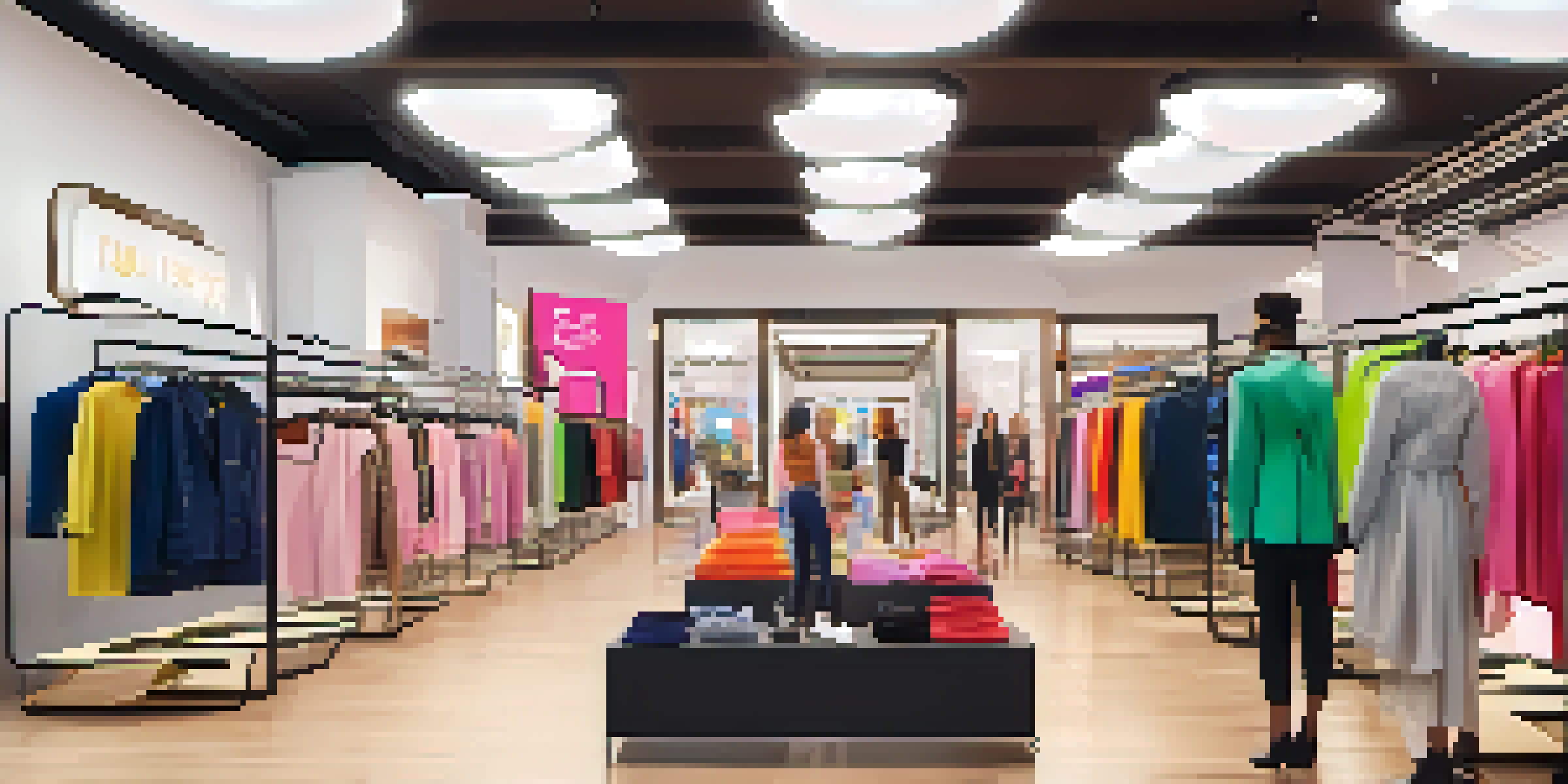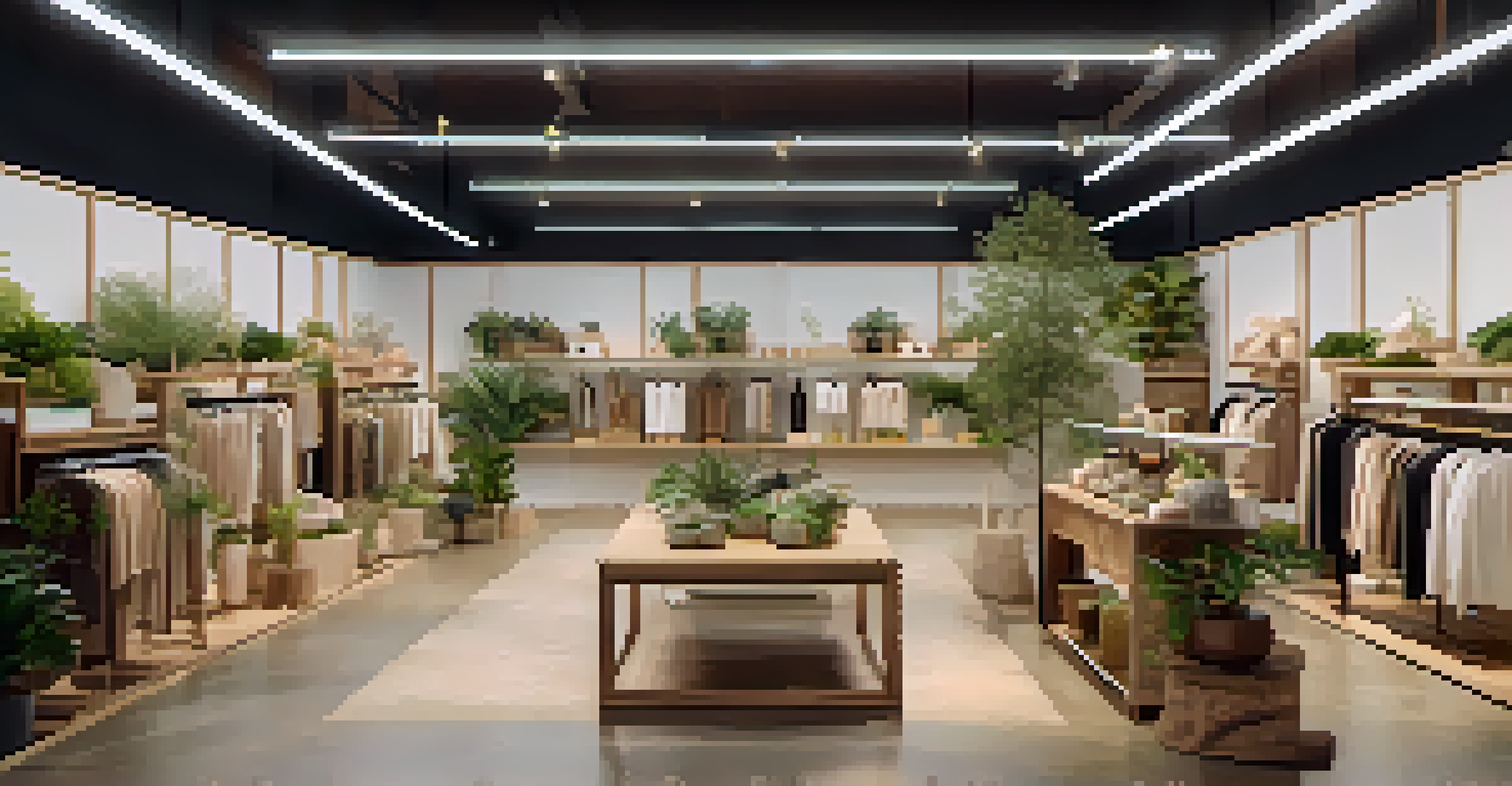Trends in Fashion Retail Technology: What's Next in 2023?

The Rise of Augmented Reality in Fashion Retail
Augmented reality (AR) is transforming the way customers experience fashion retail. With AR, shoppers can try on clothes virtually, allowing them to see how items fit and look without stepping into a fitting room. This immersive experience not only enhances customer engagement but also reduces return rates, as consumers feel more confident in their purchases.
Fashion is about dreaming and making other people dream.
For example, brands like Gucci and Zara are already implementing AR features in their apps, making shopping more interactive and enjoyable. Customers can point their smartphones at a product to see it in 3D or visualize how it would look on them. This technology creates a bridge between the digital and physical shopping experiences, catering to the tech-savvy consumer.
As AR technology continues to advance, we can expect more fashion retailers to adopt it, offering personalized experiences that meet the evolving demands of today’s shoppers. This trend is just the beginning of a revolution in how we shop for fashion.
Sustainability Through Smart Inventory Management
Sustainability is a hot topic that has entered the fashion retail sector, leading to innovative inventory management solutions. By leveraging data analytics and artificial intelligence, retailers can predict consumer demand more accurately, minimizing overproduction and waste. This not only helps the planet but also aligns with the growing consumer preference for eco-friendly brands.

For instance, companies like H&M are using AI to analyze customer buying patterns, allowing them to adjust their stock levels accordingly. This means less unsold inventory and a more sustainable approach to fashion retail. It's a win-win situation where businesses can save costs while being environmentally conscious.
AR Enhances Fashion Shopping
Augmented reality allows shoppers to virtually try on clothes, improving engagement and reducing return rates.
As technology continues to evolve, we expect to see even more advancements in smart inventory management, making sustainability a core principle in fashion retail. This trend challenges retailers to rethink their practices and embrace a more responsible approach.
Personalization Through Data-Driven Insights
Personalization has become a key differentiator in the fashion retail industry, with brands turning to data-driven insights to tailor their offerings. By analyzing customer behavior and preferences, retailers can create personalized shopping experiences that resonate with individual shoppers. This level of customization fosters loyalty and encourages repeat business.
Sustainability is no longer a choice; it’s a necessity for businesses to thrive in a changing world.
For example, companies like Stitch Fix utilize algorithms to recommend items based on a customer’s previous purchases and style choices. Shoppers receive curated boxes that fit their unique tastes, making the process of finding the perfect outfit much easier and more enjoyable. This not only enhances the shopping experience but also builds a stronger connection between the brand and the consumer.
As we move through 2023, expect personalization to deepen, with brands investing in advanced analytics and machine learning to refine their approaches. This trend is not just about selling clothes; it’s about understanding customers on a more intimate level.
The Role of Social Media in Fashion Retail Innovation
Social media continues to shape the fashion retail landscape, offering platforms for brands to connect directly with consumers. In 2023, we can see a growing trend of social commerce, where brands utilize platforms like Instagram and TikTok for selling directly to followers. This seamless integration of shopping and socializing creates a more engaging customer experience.
For instance, many fashion influencers are partnering with brands to showcase products in a relatable context, driving sales through their recommendations. This strategy not only builds credibility but also taps into the emotional aspect of shopping through storytelling. Social media is not just a marketing tool; it’s becoming a vital sales channel.
Sustainability Through AI
Smart inventory management using AI helps retailers minimize waste and align with eco-conscious consumer preferences.
As this trend evolves, we can anticipate more innovative tools and features from social media platforms to support fashion retail. Brands that embrace this change will be better positioned to reach their target audiences and drive conversions.
E-commerce Innovations for Enhanced User Experience
The e-commerce landscape is rapidly evolving, with innovations aimed at enhancing user experience taking center stage. From faster load times to improved navigation, retailers are focusing on creating seamless online shopping environments. With consumers demanding efficiency and convenience, these innovations are crucial for retaining customers.
For example, features such as one-click purchasing and chatbots for customer service have become standard practices. These tools not only streamline the shopping process but also provide immediate assistance, making online shopping more user-friendly. As technology advances, we can expect even more features that prioritize customer satisfaction.
In 2023, expect e-commerce platforms to continue enhancing their offerings, with a focus on mobile optimization and personalized shopping journeys. Retailers that invest in these innovations will likely see increased customer loyalty and higher sales.
Blockchain Technology for Transparency and Security
Blockchain technology is making waves in the fashion retail sector by providing transparency and security in transactions. As consumers become more conscious of ethical sourcing and production practices, the demand for traceability in the supply chain is on the rise. Blockchain allows brands to share information about the origin and journey of their products, building trust with customers.
For instance, brands like Everledger are using blockchain to track the lifecycle of luxury goods, ensuring authenticity and ethical practices. This technology not only protects consumers from fraud but also empowers them to make informed purchasing decisions. Transparency has never been more critical in building brand loyalty.
Social Media Drives Sales
Brands are leveraging social platforms for direct sales, blending shopping with social engagement to enhance customer experiences.
As we look ahead to 2023, we expect blockchain to play a significant role in reshaping how consumers interact with fashion brands. Retailers that adopt this technology will likely gain a competitive edge in a market that values ethics and transparency.
The Future of In-Store Experiences with Technology
In-store experiences are being reimagined through technology, as retailers look to create immersive shopping environments. From interactive displays to smart mirrors, technology is being integrated to enhance the physical shopping experience. This trend aims to bridge the gap between online and offline shopping, making visits to brick-and-mortar stores more engaging.
For example, retailers like Nike are utilizing smart mirrors that allow customers to view different sizes and colors of a product without having to physically try them on. This not only saves time but also creates a futuristic shopping experience. Technology is not just an add-on; it’s becoming an integral part of how we shop in-store.

As we advance through 2023, expect more retailers to invest in innovative in-store technologies. By creating memorable experiences, brands can attract more foot traffic and foster customer loyalty in a competitive landscape.
Conclusion: Embracing Change in Fashion Retail Technology
The trends in fashion retail technology for 2023 showcase a significant shift towards innovation and customer-centric approaches. From augmented reality to blockchain, technology is reshaping how consumers interact with fashion brands. Retailers who embrace these changes will not only stay competitive but also build stronger connections with their customers.
As we’ve explored, sustainability, personalization, and enhanced experiences are at the forefront of this evolution. The retail landscape is becoming more dynamic, and those who adapt will thrive in this fast-paced environment. It’s an exciting time for fashion retail, filled with opportunities for growth and transformation.
In conclusion, staying ahead of these trends will be crucial for fashion retailers looking to excel in 2023 and beyond. By leveraging technology and embracing change, brands can create memorable experiences that resonate with their customers.